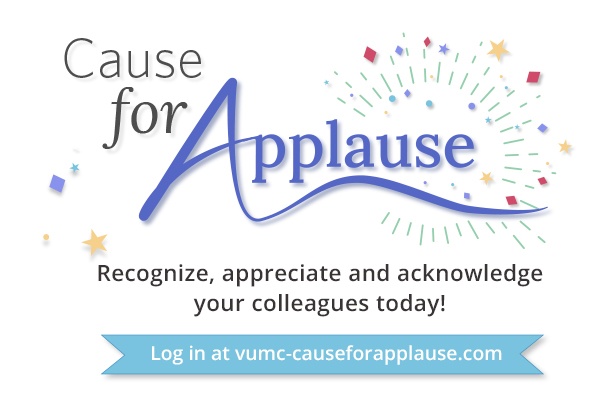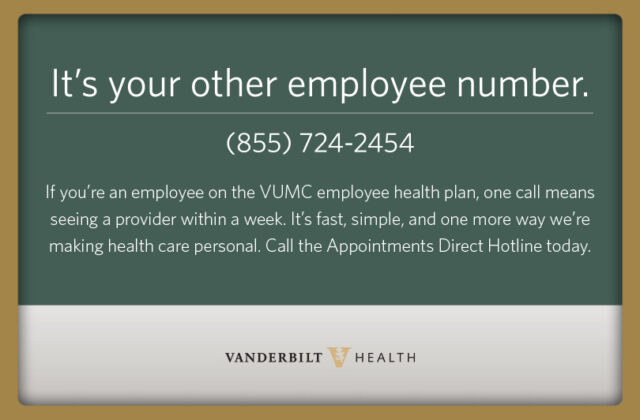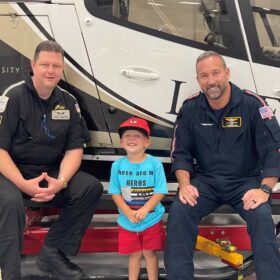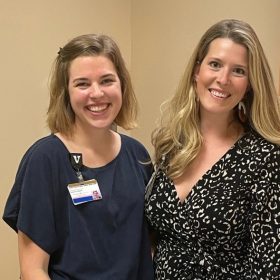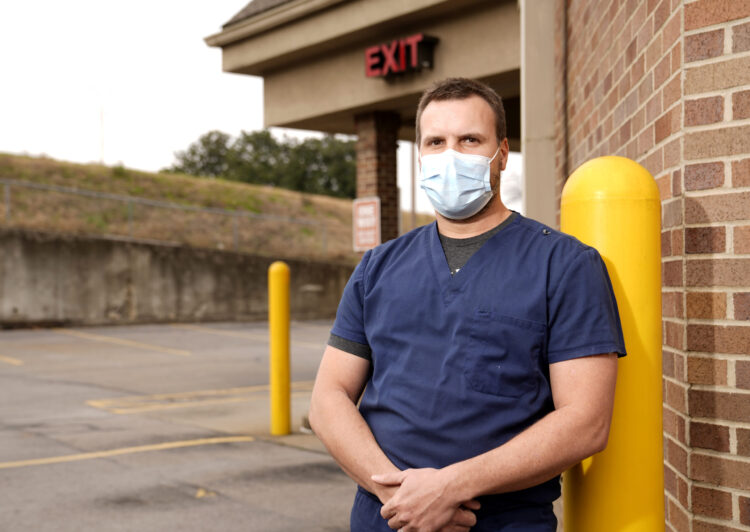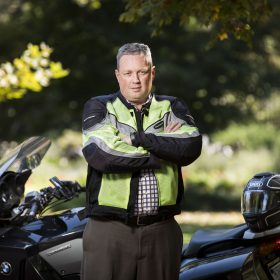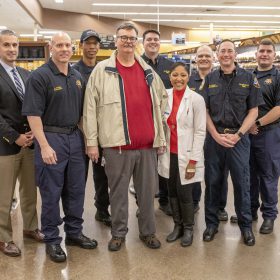Nashville to Denver flight. A sick passenger. The crew put out a call: “Are there any medical professionals on board?” A Vanderbilt nurse raised her hand.
Noel Olson is a Vanderbilt Emergency Department nurse and an Air National Guard medic, so stabilizing patients is kind of what she does
November 6, 2019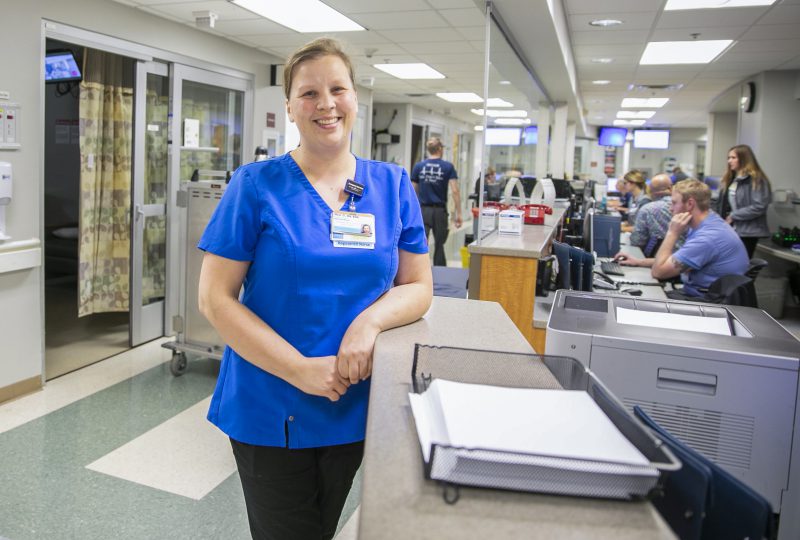
Noel Olson at VUMC, a more traditional setting for treatment than the cabin of a commercial airliner. Photo by Anne Rayner
Noel Olson, BSN, RN, a Vanderbilt adult emergency department nurse, had just come off a 12-hour shift and made her way to the airport to catch a plane to Denver. She was looking forward to a nap during the flight.
Soon she was attending to more important matters.
The Southwest flight had taken off and the plane was at more than 10,000 feet when an announcement came over the cabin speakers: “Are there any medical professionals on board?”
A 67-year-old woman, who was traveling with her husband, had fallen ill after takeoff and was feeling so sick that the flight crew was considering diverting the flight.
Olson, who, in addition to being an experienced emergency nurse, is also a flight medic with the Air National Guard, raised her hand.
If you get sick on a flight, and the person who ends up attending to you is both an emergency room nurse and an Air National Guard flight medic, you know you have picked the right flight.
If you get sick on a flight, and the person who ends up attending to you is both an emergency room nurse and an Air National Guard flight medic, you know you have picked the right flight.
Olson, who was on her way to her monthly Guard duty in Cheyenne, Wyoming, had a bag of medical supplies with her, and as she examined the woman, she could see something was wrong.
The sick passenger was sweating heavily. Her pulse was very weak, about 50 beats per minute. Her blood pressure was very low, about 70 over 40. She was also very anxious and embarrassed.
“She was talking a little bit,” Olson said. “She kept saying, ‘I don’t feel well. Something’s not right.’”
Members of the flight crew removed the aisle seat and the sick passenger reclined across the two remaining seats, resting her head against the window of the plane.
The crew wanted to know if they should divert the plane to a closer airport, since the flight was still an hour out of Denver. Calling on her experience caring for thousands of patients, Olson told the crew a diversion wouldn’t be necessary.
Four flight attendants and the patient’s husband surrounded Olson as she evaluated the sick woman. The crew wanted to know if they should divert the plane to a closer airport, since the flight was still an hour out of Denver.
Calling on her experience caring for thousands of patients, Olson told the crew a diversion wouldn’t be necessary.
She administered oxygen and kept a constant conversation with the woman to ease her anxiety. “I don’t know how long it was, if it was an hour, hour-and-a-half. But all I know is I didn’t leave her side” until the plane landed, and emergency medical technicians took the woman off the plane for evaluation.
What Olson did would be an extraordinary circumstance for almost any medical professional, but she did exactly what Air Force medics do — stabilize patients aboard flights to bring them to an advanced level of care. It’s what Olson, a native of Monticello, Minnesota, has done for 13 years.
“My passion has always been to take care of people, and the whole big goal of mine to join the Air Force was to take care of the people that take care of us,” she said.
Olson is modest about taking credit for what she did, saying it was a team effort with others on the plane.
“I look at it as I’m right there at the right time,” she said. “I wasn’t planning on being on that flight.” She had hoped to take a later one.
Besides, she said, she’s just doing her job. She looks back at the experience as a training opportunity. Could she develop something for flight attendants attending to medical emergencies if a medical professional isn’t aboard?
“That’s the kind of person I am — how can I fix the problem?” she said. “I always challenge myself to be better so that I can be better for the people I’m taking care of.”
A fellow passenger on the flight, Jon Acuff, was seated in the same row as the sick woman, and he later summed up what he saw on a social media post: “The Southwest team did an amazing job, but the superhero today was Noel.”




